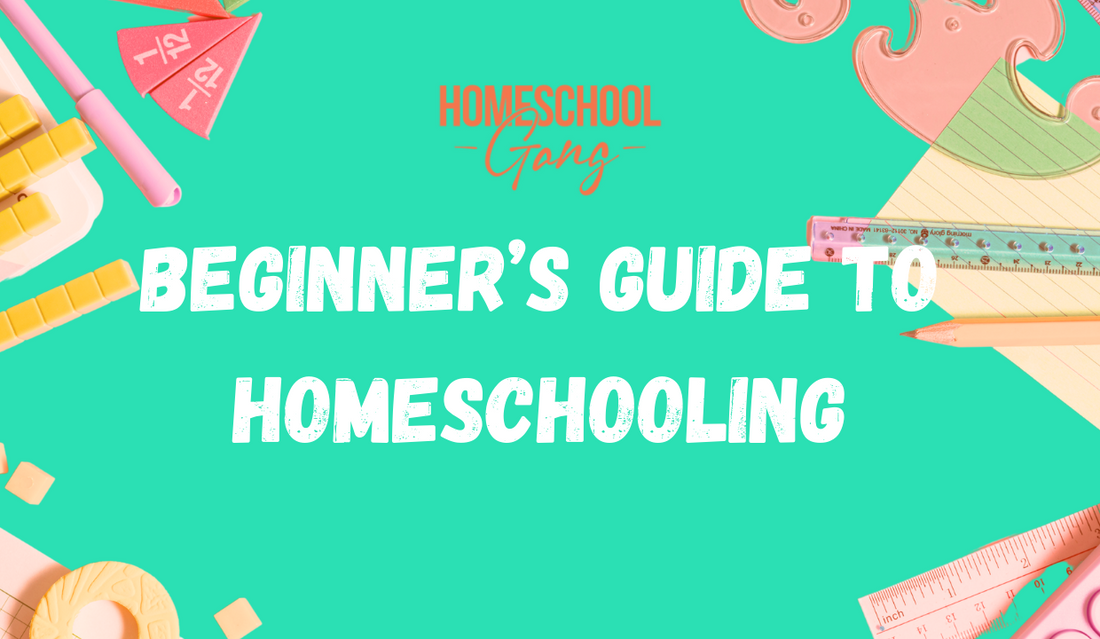
Beginner’s Guide to Homeschooling: Essential Steps to Get Started
Share
Embarking on the homeschooling journey can be both exhilarating and daunting. As a new homeschooling parent, you might feel overwhelmed by the myriad of decisions ahead of you—from understanding legal obligations to choosing the right curriculum and setting up a conducive learning environment. This guide is designed to ease your transition into homeschooling by covering the essential steps you need to take to get started.
Step 1: Understand Legal Requirements
Before you dive into the world of homeschooling, it's crucial to familiarize yourself with the legal requirements in your area. Homeschooling laws vary widely from one place to another, so what’s required in one state, country, or region might be different in another.
- Research Local Laws: Start by visiting your state’s department of education website or a trusted organization like the Home School Legal Defense Association (HSLDA) to find specifics about compulsory attendance, required subjects, and record-keeping.
- Notification: Some regions require parents to notify local or state education authorities before they begin homeschooling. Make sure you complete all necessary paperwork to avoid legal issues.
- Assessments: Check if your state requires homeschooled students to undergo standardized testing at certain grades, or if you must submit regular progress reports.
Step 2: Choose the Right Curriculum
Choosing a curriculum is one of the most significant decisions you will make as it shapes your child's educational experience and influences their engagement and success.
- Assess Your Child’s Needs: Consider your child’s learning style (visual, auditory, kinesthetic, etc.), interests, and the level of difficulty they can handle. This will help you select a curriculum that best suits them.
- Explore Curriculum Options: There are numerous homeschooling curricula available, ranging from traditional textbooks to interactive online courses. Some popular choices include Charlotte Mason, Classical Education, Montessori, and Unschooling approaches.
- Seek Recommendations: Connect with other homeschooling families, join forums, and attend homeschooling fairs to get insights and reviews about different curricula.
Step 3: Set Up an Effective Learning Environment
Creating a dedicated learning environment plays a pivotal role in a child’s educational success. It helps in maintaining focus and organizing materials and resources efficiently.
- Choose a Dedicated Space: This doesn’t necessarily mean a separate room, but a specific area in your home that is consistently used for learning. This helps in minimizing distractions and establishing a routine.
- Equip the Space: Depending on the curriculum, you might need a desk, a comfortable chair, a computer, adequate lighting, and storage for books and materials.
- Make it Inviting: Incorporate elements that will make the space welcoming and stimulating for your child, such as educational posters, a reading nook, or space for art projects.
Step 4: Establish a Routine
Homeschooling offers the flexibility to create a schedule that fits your family’s lifestyle and your child's natural learning rhythms.
- Create a Daily Schedule: While flexibility is one of the perks of homeschooling, having a basic routine helps in maintaining consistency and discipline. Include time for core subjects, breaks, physical activity, and hobbies.
- Be Adaptable: Adjust the schedule as needed based on your child’s energy levels and focus throughout the day. Some children learn better in the morning, while others might be more receptive in the afternoon.
Step 5: Stay Connected
Homeschooling doesn’t mean you have to go at it alone. There are vast resources and communities to support you:
- Join Homeschooling Groups: Whether it’s through social media, local co-ops, or state organizations, connecting with other homeschoolers can provide you with support, resources, and socialization opportunities for your child.
- Incorporate Field Trips and Cooperative Learning: Regularly plan educational outings and group learning sessions with other homeschoolers to enrich your child’s educational experience.
Starting your homeschooling journey is about creating a learning environment that best fits your child’s needs. It requires diligence and commitment, but with the right preparation, it can be an incredibly rewarding experience for your family. Remember, the goal is not just to educate but to inspire a lifelong love of learning.
